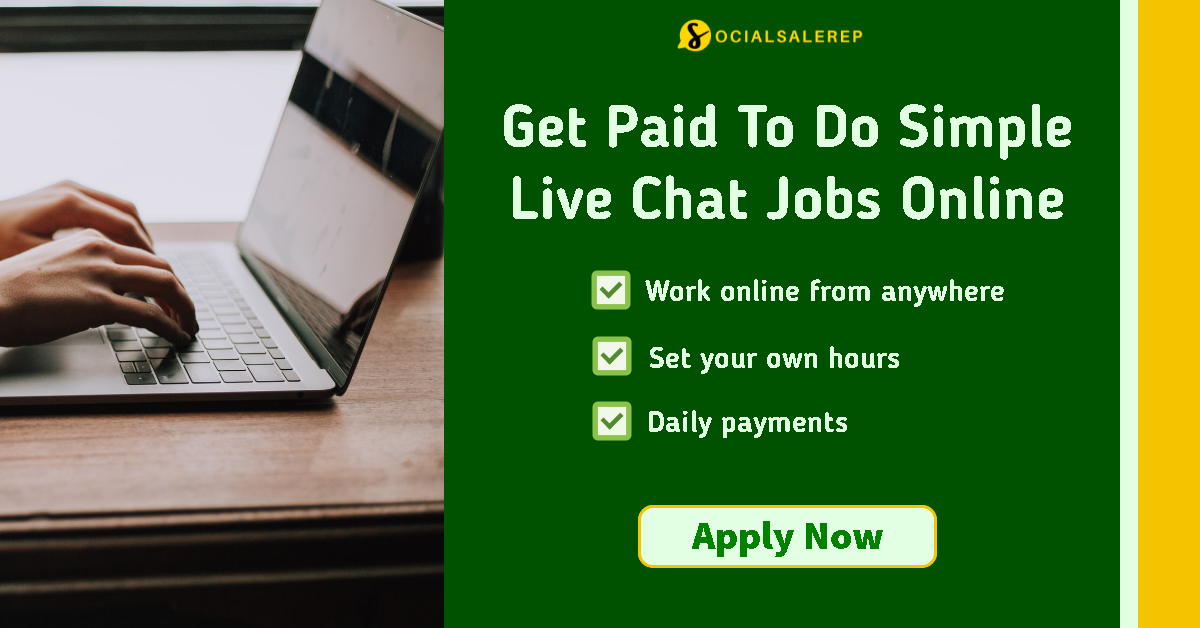If you’re passionate about sharing knowledge and want to make a lasting impact in the field of education, then building and maintaining a successful YouTube channel can be your ticket to reaching a larger audience. With the power of video content, you have the ability to connect with viewers from all over the world and provide them with valuable information in an engaging way. In this article, we will explore some key steps and strategies that can help you establish a thriving YouTube channel dedicated to education. From creating high-quality content to effectively promoting your videos, you’ll learn everything you need to know to make your channel a success.
Creating a YouTube Channel
So, you’ve decided to start your own YouTube channel! Congratulations on taking the first step towards sharing your knowledge and expertise with the world. Building a successful YouTube channel takes time and effort, but with the right approach, you can create a platform that engages and educates your audience. Here are some key steps to get you started:
Choosing a niche/topic
The first step in building a successful YouTube channel is to choose a niche or topic that you are passionate about and knowledgeable in. Finding your niche will help you attract a specific audience and establish yourself as an expert in that field. Whether it’s science, mathematics, history, or any other educational topic, make sure to choose a niche that you genuinely enjoy and feel confident teaching.
Setting goals
Before diving into content creation, it’s important to set clear goals for your YouTube channel. What do you want to achieve with your channel? Do you want to educate a large audience or focus on a specific target group? Are you aiming to monetize your channel and generate income from your content? Setting specific and measurable goals will help guide your content strategy and keep you motivated throughout your YouTube journey.
Creating a channel name
Your channel name is an important branding element that will help viewers recognize and remember your channel. Choose a name that reflects your niche or topic and is memorable. Try to keep it concise and easy to spell. You can also incorporate your own name or a unique play on words to make it more personal and relatable to your viewers.
Designing a channel logo and banner
Your channel logo and banner are visual representations of your brand and should resonate with your target audience. Create a visually appealing and professional-looking logo that represents your niche and aligns with your channel name. It should be easily recognizable and scalable across different platforms. Your channel banner should be eye-catching and display relevant information about your channel, such as the type of content you create and posting schedule.
Developing Content Strategy
Now that you have set the foundations for your YouTube channel, it’s time to develop a content strategy that will engage and educate your viewers. Here are some essential steps to follow:
Identifying target audience
Understanding your target audience is crucial for creating content that resonates with them. Consider their age, interests, education level, and what they hope to gain from your channel. Conducting market research, analyzing competitor channels, and engaging with your viewers through comments and messages can help you understand your audience better.
Researching popular keywords
Using relevant keywords in your video titles, descriptions, and tags is vital for search engine optimization (SEO) and better visibility on YouTube. Conduct keyword research using tools like Google Keyword Planner and YouTube’s own search suggestions to identify popular keywords related to your niche. Incorporate these keywords strategically into your content to attract more organic traffic to your channel.
Creating a content calendar
Consistency is key when it comes to building a successful YouTube channel. Create a content calendar to plan and schedule your video releases. This will help you stay organized, maintain a consistent posting schedule, and keep your audience engaged. Consider the length and format of your videos, as well as the topics you will cover, when creating your content calendar.
Planning educational video formats
To effectively educate your audience, consider incorporating various video formats into your content strategy. These can include tutorials, lectures, demonstrations, Q&A sessions, case studies, and more. Experiment with different formats to keep your content fresh and engaging. You can also consider collaborating with other educational YouTubers to bring different perspectives and expertise to your channel.
Video Production
Producing high-quality videos is essential for attracting and retaining viewers. Follow these steps to ensure your videos look and sound professional:
Investing in good quality equipment
Investing in good quality equipment, such as a camera, microphone, and lighting setup, will significantly improve the visual and audio quality of your videos. While you don’t need to break the bank, investing in reliable and efficient equipment will make a noticeable difference in the overall production value of your content. Consider researching and investing in equipment that suits your specific needs and budget.
Setting up a filming space
Creating a dedicated filming space will help you maintain consistency and professionalism in your videos. Choose a well-lit area with minimal background noise. You can set up a backdrop or decorate the space to reflect your brand aesthetic and niche. Ensure that your filming space is well-organized and free of any distractions that could divert your viewers’ attention.
Writing scripts
While some educational YouTubers prefer an improvised approach, writing scripts can help you deliver your content more effectively and stay on track. A well-written script will ensure that you cover all the important points, maintain a coherent flow, and minimize errors and distractions during recording. Write your scripts in a conversational and engaging tone to keep your viewers interested.
Recording and voiceover techniques
When recording your videos, aim for clear and high-quality audio. Speak clearly and confidently, and consider using a script or teleprompter to help you stay on track. If you are incorporating voiceovers into your videos, practice speaking at a comfortable pace and modulate your voice to maintain viewer engagement. Experiment with different recording techniques to find what works best for you and your content.
Editing and enhancing videos
Editing is where the magic happens, bringing all your hard work together into a cohesive and professional video. Use video editing software such as Adobe Premiere Pro or Final Cut Pro to trim footage, add transitions, incorporate graphics or overlays, and enhance the overall visual appeal of your videos. Don’t forget to optimize your video’s audio levels and incorporate background music or sound effects, if appropriate.
Optimizing Videos for Better Visibility
To ensure your videos reach a wider audience, make use of the following optimization techniques:
Using relevant keywords in titles and descriptions
Including relevant keywords in your video titles and descriptions will help your videos appear in search results when viewers are searching for content related to your niche. Be strategic in selecting keywords that accurately describe your video’s content, and incorporate them naturally into your titles and descriptions for optimal SEO.
Creating eye-catching thumbnails
Thumbnails are the first visual element that viewers see when browsing videos, so it’s important to create eye-catching and compelling thumbnails that encourage click-throughs. Use high-quality images, clear text, and bold colors to make your thumbnails stand out. Consider using graphics, annotations, or images that convey the main topic or theme of your video.
Adding accurate tags and categories
Tags and categories help YouTube understand the content of your videos and suggest them to relevant viewers. Add accurate and specific tags that describe your video’s content, using relevant keywords. This will help your videos appear as suggested content when viewers are watching similar videos or searching for related topics.
Utilizing closed captions and subtitles
Closed captions and subtitles not only benefit viewers with hearing impairments but also improve the accessibility and searchability of your videos. YouTube provides automatic captioning for videos, but it’s essential to review and correct any inaccuracies. Additionally, consider providing subtitles in different languages to cater to a wider audience.
Promoting videos through social media
Promoting your videos through various social media platforms will help increase visibility and attract new viewers to your YouTube channel. Share your videos on platforms like Facebook, Twitter, Instagram, and LinkedIn, and consider joining relevant online communities or groups where your target audience hangs out. Engage with your followers, respond to comments, and encourage them to share your content with their networks.

Engagement with the Audience
Engaging with your audience is crucial for building a loyal and active community. Here are some ways to interact with your viewers:
Responding to comments and messages
Take the time to respond to comments and messages from your viewers. Acknowledge their feedback, answer their questions, and show appreciation for their support. Engaging with your audience fosters a sense of connection and keeps them coming back for more.
Encouraging viewers to like, share, and subscribe
At the end of each video, remind your viewers to like, share, and subscribe to your channel. Encourage them to leave comments and engage with your content. These calls-to-action will help increase engagement, expand your reach, and attract new subscribers to your channel.
Organizing live Q&A sessions
Live Q&A sessions are a great way to directly interact with your viewers in real-time. Plan and promote these sessions in advance, and encourage your audience to submit questions beforehand or ask them during the live stream. This format allows you to address specific topics or concerns and provides an opportunity for insightful discussions.
Conducting polls and surveys
Conducting polls and surveys will not only help you gather valuable feedback from your audience but also make them feel involved in shaping your content. Incorporate polls and surveys into your video descriptions, community tab, or social media platforms to gather insights and understand what your viewers are interested in.
Collaborating with other educational YouTubers
Collaborating with other educational YouTubers can help broaden your reach and attract new viewers. Look for creators in your niche who complement your content and have a similar target audience. Collaborations can take different forms, such as joint videos, guest appearances, or even just sharing each other’s content on social media. These collaborations will expose your channel to new audiences and provide fresh perspectives for your viewers.
Building a Community
Building a community around your YouTube channel is essential for long-term success. Here are some strategies to foster a strong and engaged community:
Creating a website or blog
Creating a dedicated website or blog for your YouTube channel provides a centralized platform for your content and encourages further engagement. Share additional resources, blog posts related to your videos, and allow viewers to leave comments or participate in discussions outside of YouTube’s comments section.
Starting a mailing list for updates
Starting a mailing list allows you to directly communicate with your audience and provide updates on new video releases, upcoming events, or exclusive content. Encourage your viewers to subscribe to your mailing list through your YouTube channel or website, and consistently provide valuable content to keep them engaged.
Participating in educational forums
Participating in educational forums and online communities related to your niche can help you establish yourself as an authority and expand your reach. Share your knowledge, answer questions, and engage in discussions with other members. Include your YouTube channel link in your forum signature or profile to drive traffic to your channel.
Organizing meetups and events
Organizing meetups or educational events in your local community or even online can create opportunities for personal connections with your viewers. These gatherings allow you to interact with your audience face-to-face, share knowledge, and build stronger relationships. Consider partnering with local educational organizations or libraries to reach a wider audience and enhance the impact of your events.
Establishing partnerships with educational organizations
Collaborating with educational organizations can help establish credibility and attract a larger audience. Reach out to schools, universities, or other educational institutions to explore potential partnership opportunities. You can create content specifically tailored to their needs or offer workshops and training sessions for students or educators.

Analyzing Channel Performance
Regularly monitoring and analyzing the performance of your YouTube channel is essential for understanding what’s working and what needs improvement. Here are some key areas to focus on:
Monitoring video metrics and analytics
YouTube provides a wealth of data and analytics to help you understand how your videos are performing. Pay attention to metrics such as views, watch time, audience retention, likes, dislikes, and subscriber growth. Use this data to identify trends, determine which videos resonate with your audience, and make informed decisions for improving your content strategy.
Identifying popular content
Identify your most popular videos by analyzing metrics such as views, comments, likes, and shares. Look for patterns or common themes among your top-performing videos to gain insights into what your audience finds most interesting and engaging. Use this information to create more content that aligns with their preferences.
Analyzing audience demographics
Understanding your audience demographics will help you tailor your content to their needs and preferences. Analyze YouTube’s audience analytics to gather insights on the age, gender, location, and interests of your viewers. This information can guide your content creation, marketing efforts, and collaborations with brands or educational organizations targeting similar demographics.
Tracking subscriber growth
Tracking the growth of your subscriber base is a key indicator of your channel’s success. Aim for steady growth and monitor any fluctuations or trends that may arise. Identify what factors or videos contributed to spikes or drops in subscribers to refine your content strategy accordingly.
Adjusting content strategy based on insights
Based on the insights gathered from monitoring and analyzing your channel’s performance, make adjustments to your content strategy as needed. Experiment with different video formats, topics, or lengths to cater to your audience’s preferences. Continually test and refine your approach to ensure your content remains engaging and valuable to your viewers.
Monetizing the Channel
If you’re interested in monetizing your YouTube channel and generating income from your educational content, consider the following strategies:
Enabling monetization and joining YouTube Partner Program
To enable monetization on your YouTube channel, you will need to join the YouTube Partner Program (YPP). YPP allows you to earn money from advertisements that appear on your videos. Once you meet the program’s eligibility requirements, you can apply for monetization through your YouTube Studio dashboard. Keep in mind that building a substantial subscriber base and watch time are important factors in becoming eligible for the program.
Understanding ad revenue and AdSense
When your channel is monetized, you will start earning revenue from advertisements shown on your videos. YouTube pays content creators through Google AdSense, which is an advertising program that matches ads to your content and pays you based on factors such as ad impressions, ad clicks, and viewer engagement. Familiarize yourself with YouTube’s revenue policies and AdSense guidelines to ensure you comply with their terms and maximize your earnings.
Exploring sponsorship opportunities
As your channel grows, you may attract sponsorship opportunities from brands or educational organizations that align with your content. Collaborating with sponsors can provide additional income streams, access to resources, or opportunities for creating sponsored content. Be selective and choose sponsors that genuinely align with your values and resonate with your audience.
Creating and selling educational merchandise
Consider creating and selling educational merchandise to diversify your revenue streams and offer additional value to your audience. Create merchandise such as t-shirts, mugs, or educational resources featuring your channel’s logo, tagline, or educational quotes. Platforms like Teespring or Printful can help you design, produce, and sell your merchandise with ease.
Promoting affiliate products
Affiliate marketing is another way to monetize your YouTube channel. Research and identify relevant products or services that align with your educational content and join affiliate programs. When you recommend or review these products in your videos or video descriptions, use unique affiliate links. If viewers make a purchase through those links, you earn a commission.
Dealing with Challenges
Building and maintaining a YouTube channel isn’t always a smooth journey. Here are some common challenges you may encounter and tips for overcoming them:
Dealing with negative comments and trolls
Unfortunately, the internet is not always a friendly place. You may encounter negative comments or trolls who deliberately try to provoke reactions. It’s important to stay calm, not take it personally, and respond to criticism constructively. Focus on engaging with your supportive viewers and creating a positive community around your channel.
Managing copyright issues
When creating educational content, it’s crucial to respect copyright laws and avoid infringing on other creators’ intellectual property. Get familiar with copyright rules, fair use, and Creative Commons licenses. Whenever possible, use your own original content or seek appropriate permissions and give proper attribution when using others’ work.
Handling technical difficulties
Technical difficulties can be frustrating, but they are common in the world of content creation. Make sure to familiarize yourself with your equipment, software, and editing tools to minimize technical issues. Back up your files regularly, test your equipment before recording, and seek online resources or communities for troubleshooting tips.
Overcoming burnout and maintaining motivation
Creating and managing a YouTube channel is a demanding task that may cause burnout if not managed effectively. Take breaks when needed, establish a realistic posting schedule, and prioritize self-care. Surround yourself with a supportive community of fellow content creators and seek inspiration from successful educational channels that motivate you.
Adapting to YouTube algorithm changes
YouTube’s algorithm is constantly evolving, and it’s essential to adapt your content strategy to stay relevant and visible. Keep up-to-date with YouTube’s algorithm updates and best practices. Experiment with different video formats, lengths, or tags to understand how the algorithm responds to different approaches. Be flexible and open to embracing changes to ensure your content remains discoverable.
Staying Up-to-Date with YouTube Trends
To thrive as an educational YouTuber, staying up-to-date with YouTube trends and industry developments is crucial. Here are some strategies to help you stay at the forefront:
Following YouTube algorithm updates
Stay informed about YouTube algorithm updates and how they impact content creators. YouTube releases guidelines and updates regularly, so make sure to follow their official channels for the latest news and best practices. Understanding algorithm changes will help you adapt your content strategy and optimize your videos for better visibility.
Researching trending educational topics
Monitor trends and developments within your educational niche. Stay informed about new discoveries, research findings, or changes in educational curricula that could impact the content you create. Researching trending topics will help you stay relevant and provide valuable and up-to-date information to your viewers.
Studying successful educational channels
Study successful educational channels to learn from their strategies. Analyze their content, engagement techniques, production quality, and marketing approaches. Identify what makes them successful and how you can incorporate similar elements into your own channel. However, always maintain your unique voice and approach to stand out from the crowd.
Experimenting with new video formats
Don’t be afraid to experiment with new video formats or ideas. Stay open to trying different approaches and testing new content formats that might appeal to your audience. Be creative and innovative in your content creation to keep your viewers engaged and excited about your channel.
Attending YouTube conferences and events
Attending YouTube conferences and industry events is a great way to network, learn from experts, and stay informed about the latest trends and strategies. Connect with fellow educational YouTubers, participate in workshops, and listen to keynote speakers to gain insights and inspiration. Attending these events can also help foster collaborations and partnerships that can benefit your channel.
In conclusion, building and maintaining a successful YouTube channel for education requires passion, dedication, and a strategic approach. By following these steps and continuously refining your content strategy, you can create a platform that not only educates and inspires viewers but also nurtures a strong and engaged community. Embrace the challenges, adapt to the evolving landscape, and never stop learning and improving. Your educational journey on YouTube starts now!







